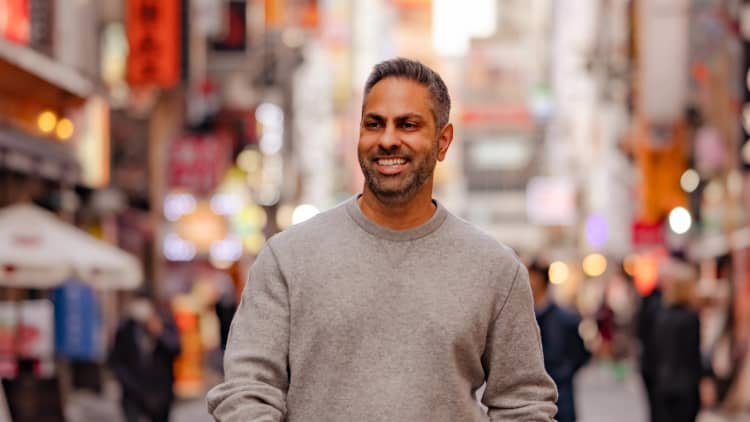Brainstorming is a popular way of coming up with new ideas. Just because it's well-known, however, doesn't mean it's the most effective, according to a Columbia professor.
Like many people, Sheena Iyengar, author of "Think Bigger: How to Innovate," was encouraged to brainstorm in school, she tells CNBC Make It. Some experts even swear by the group-thinking exercise.
After becoming an educator herself, though, Iyengar realized that brainstorming "doesn't deliver." You're better off coming up with ideas solo, she says.
This became even more evident to her while she was teaching her classes. "I began to see up close that brainstorming wasn't working," Iyengar says. "[My students] would generate so many ideas and feel really proud of themselves. And yet, when I would ask [them], 'So what idea on your list do you think is worth pursuing?,' that's where things started to fall apart."
The problems with brainstorming as a group
Brainstorming as a group often gets underwhelming results, according to psychologist Tomas Chamorro-Premuzic's 2015 Harvard Business Review article, for a few reasons, including social loafing, production blocking and anxiety.
Social loafing, "also known as free riding," speaks to the way "people to make less of an effort when they are working in teams than alone," Chamorro-Premuzic wrote. Production blocking, meanwhile, is when "individuals can only express a single idea at one time if they want other group members to hear them."
In other words, the more people are in a brainstorming group, the fewer suggestions people will make to solve the problem at hand.
Brainstorming can also introduce bias, Iyengar explains, as the person who speaks first usually "serves as a reference point." Others will then be more inclined to alter their ideas based on what that person says.
The DIY strategy that beats brainstorming
The real way to produce quality ideas is through "independent thought," Iyengar says.
"I have asked thousands of people now over the years a very simple question. I'll say, 'Think back to the last time you had your best idea. Where were you? What were you doing?'" Iyengar says. "And I will guarantee you … maybe less than a handful of people will [say] 'I was brainstorming.' It's usually, 'I was in the shower, I was taking a nap, I was doing a jog or I was talking to my friend,' but not a formal brainstorm."
Thinking independently requires some structure to be effective, she says.
- Write your ideas on a piece of paper, detailing what the problem is and why each solution could possibly fix it.
- Say what you've written out loud. Our ideas can seem great in our head, but turn out to be a lot more "vague" when we vocalize them.
- Trust your own judgment.
The last is arguably the most difficult step, Iyengar acknowledges. But coming up with ideas on your own can be way more fulfilling than those created through groupthink.
"[Independent thinking] can feel really good because you love those flashes of insight that you have when you're on a jog or taking a nap," she says. "Actually, we value those a lot more than we value anything we're doing in a brainstorm."
DON'T MISS: Want to be smarter and more successful with your money, work & life? Sign up for our new newsletter!
Get CNBC's free report, 11 Ways to Tell if We're in a Recession, where Kelly Evans reviews the top indicators that a recession is coming or has already begun.



